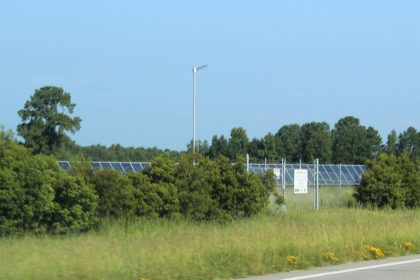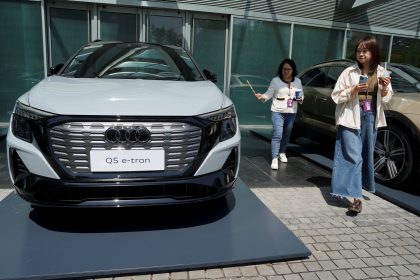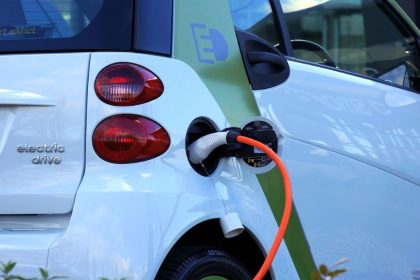Facing Sweltering Summers, California’s Newsom Floats Plan for State to Buy Energy

SACRAMENTO, Calif. (AP) — For most of the year, California’s quest to rid itself of fossil fuels seems on track: Electric cars populate highways while energy from wind, solar and water provides much of the power for homes and businesses.
Then it gets hot, and everyone in the nation’s most populous state turns on their air conditioners at the same time. That’s when California has come close to running out of power in recent years, especially in the early evenings when electricity from solar is not as abundant.
Now, Democratic Gov. Gavin Newsom wants to buy massive amounts of renewable energy to help keep the lights on. The idea is to use the state’s purchasing power to convince private companies to build largescale power plants that run off of heat from underground sites and strong winds blowing off the coast — the kinds of power that utility companies have not been buying because it’s too expensive and would take too long to build.
“We laid out the markers on solar and wind, but we recognize that’s not going to get us where we need to go,” Newsom said during a news conference last week. “The issue of reliability has to be addressed.”
There’s a lot at stake, not just for the future of clean energy, but for Newsom himself. The Democratic governor, now in his second term and widely seen as a future presidential candidate, insists California will be carbon neutral by 2045. But this goal is often mocked in the summer when, to avoid rolling blackouts, state officials turn on massive diesel-powered generators to make up the state’s energy shortfall.
Demand for electricity in California has increased as the state takes step to move away from fossil fuels, including banning the sale of new gas-powered cars by 2035. California will need to add about 40 gigawatts of new power over the next 10 years, according to the California Independent Systems Operator, which manages the state’s power grid. One gigawatt is enough to power about 750,000 homes.
If the state buys lots of power from offshore wind and geothermal sources, it could mean they don’t need those emergency diesel-powered generators anymore. Wind is typically strongest in the evenings, and geothermal energy is available all the time.
This would be a big change for California, where up to now utility companies have been responsible for buying their own power. Customers would have to pay for the new power the state buys through a new, still undetermined, charge on their electric bills.
Californians already pay some of the nation’s highest energy bills. But one consumer advocacy group said Newsom’s proposal could be better for customers in the long-run. State regulators would not decide what the charge will be until the power projects are up and running — potentially several years away.
“There’s nothing free here, it’s just a question of what’s the most efficient way to develop resources,” said Matthew Freedman, staff attorney with The Utility Reform Network, a group that advocates for affordable and reliable energy. “It’s our hope that this arrangement will result in lower total costs across the state.”
Newsom’s proposal has the support of some of the state’s largest investor-owned utilities, including Pacific Gas & Electric. PG&E spokesperson Lynsey Paulo called Newsom’s proposal “likely the most efficient way to achieve a clean energy future,” saying that the state should make sure the power it buys is distributed fairly among utilities in the state.
Publicly-owned utilities, like the Los Angeles Department of Water and Power, fear the state’s entrance into the energy market will create new competition, potentially increasing prices for everyone in a market already struggling with a lack of supply.
Patrick Welch, legislative director for the California Municipal Utilities Association, said if California starts buying power the state would be competing with utilities “and that could further drive up prices.”
“In the past two or three years, the market for new resources has gotten incredibly tight,” he said. “That tightness is really impacting the price of energy and particularly during the summer months.”
Democratic lawmakers have changed Newsom’s proposal to ease some of those concerns. While Newsom wanted the state to buy any type of power, lawmakers say it should be restricted to offshore wind and geothermal — two power sources that the utility companies currently aren’t buying. The proposal is pending in the legislature.
“When you leave stuff vague, then it creates uncertainty. And at this point in time, uncertainty is not good in the investment world,” said Assemblymember Steve Bennett, a Democrat and chair of the budget subcommittee that is vetting Newsom’s proposal.
Advocates say California is in a prime position to try something like this. Last year, five companies spent more than $750 million to lease areas off the California coast for offshore wind projects. These projects could collectively generate close to 5 gigawatts of energy, according to Alex Jackson, director of American Clean Power Association, which represents these companies. That’s enough to power more than 3.5 million homes.
If approved, the next step is getting the permits and building the turbines and the infrastructure necessary to transport the power to the grid. It would be easier for these companies to sell all of their power to the state instead of selling pieces of it to multiple utilities.
“We do think there is real advantages of having a single buyer,” Jackson said.
Another area ripe for new energy development is the Salton Sea, a large saltwater lake in Southern California that has been slowly drying up. Beneath the surface of the lakebed, heat from the Earth warms underground water. Geothermal power plants use steam from this water to spin turbines that generate electricity. The water also contains lots of lithium, which is used to make batteries that power cell phones and electric cars.
There are only a few companies capable of building these large, complex power plants that take many years to build.
“This isn’t the ‘Field of Dreams.’ You need to know that there is a customer for that power,” said Assemblymember Jim Wood, a Democrat who supports the proposal. “Otherwise, you’re not going to be able to appeal to investors to be able to pull down the resources to invest the billions of dollars it’s going to take.”
























